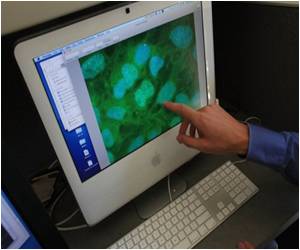Cancer cells at the edge of a tumor that are close to the surrounding environment are predictably different from the cells within the interior of the tumor.

‘Cells within the interior of a tumor are more static and less proliferation rate. But, cells around the exterior of a tumor have higher proliferation rate.’





Using this model, they discovered that cancer cells at the edge of a tumor that are close to the surrounding environment are predictably different from the cells within the interior of the tumor. Cells at the edge of a tumor invest their limited resources into cellular characteristics that promote invasion and the ability to use resources from the surrounding environment, such as blood vessels. Exterior cells develop these characteristics despite their association with a higher risk of cell death. Alternatively, cells within the interior of a tumor are surrounded by many other cells and are farther away from the resources present within the environment. Therefore, interior cells develop characteristics that allow them to compete with neighboring cells for the limited resources that are available to them.
The researchers confirmed these data by showing that cells within the interior and exterior of breast cancer tissue display distinct gene expression patterns. Cells within the interior of a tumor have characteristics that are more static, including less proliferation and more cell death. Alternatively, the cells around the exterior of a tumor have higher rates of proliferation and are more likely to be producing an acidic environment, which is consistent with the need for cells on the edge of a tumor to grow and invade into the surrounding normal tissue.
"Interestingly, differences within a single population are seen in biological invasions in nature. For example, the cane toad has been invading Australia for many years. The cane toads at the edge of the invasion have bigger legs presumably because they are adapted to moving farther and faster," said Robert A. Gatenby, M.D., senior member and chair of the Department of Diagnostic Imaging and Interventional Radiology at Moffitt.
"However, the characteristics of the invading cane toads that have allowed them to move farther and faster also come with a price: severe spinal arthritis is found in 10% of the larger-legged toads," explained Gatenby.
Advertisement
The article is published in the journal Cancer Research.
Advertisement














